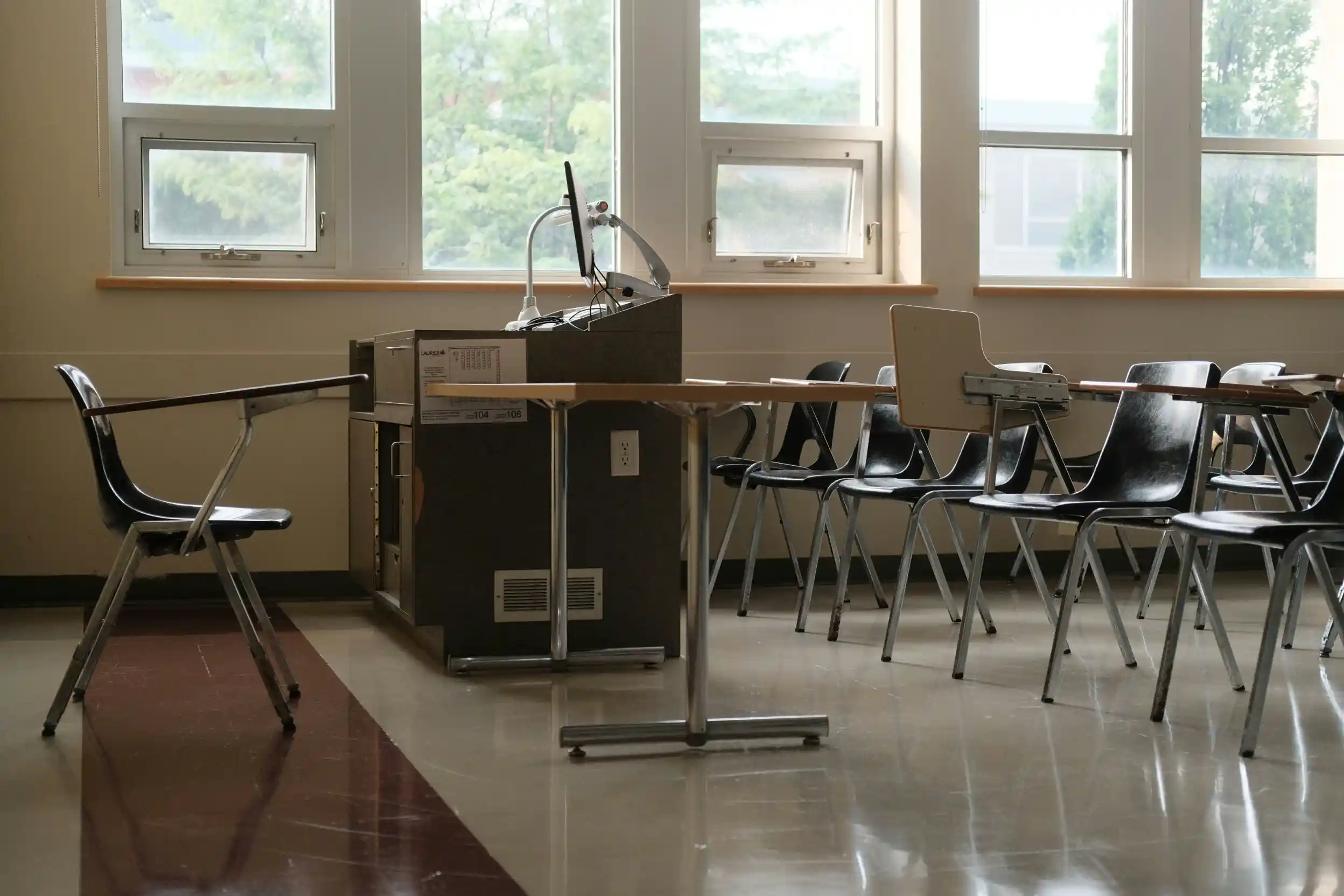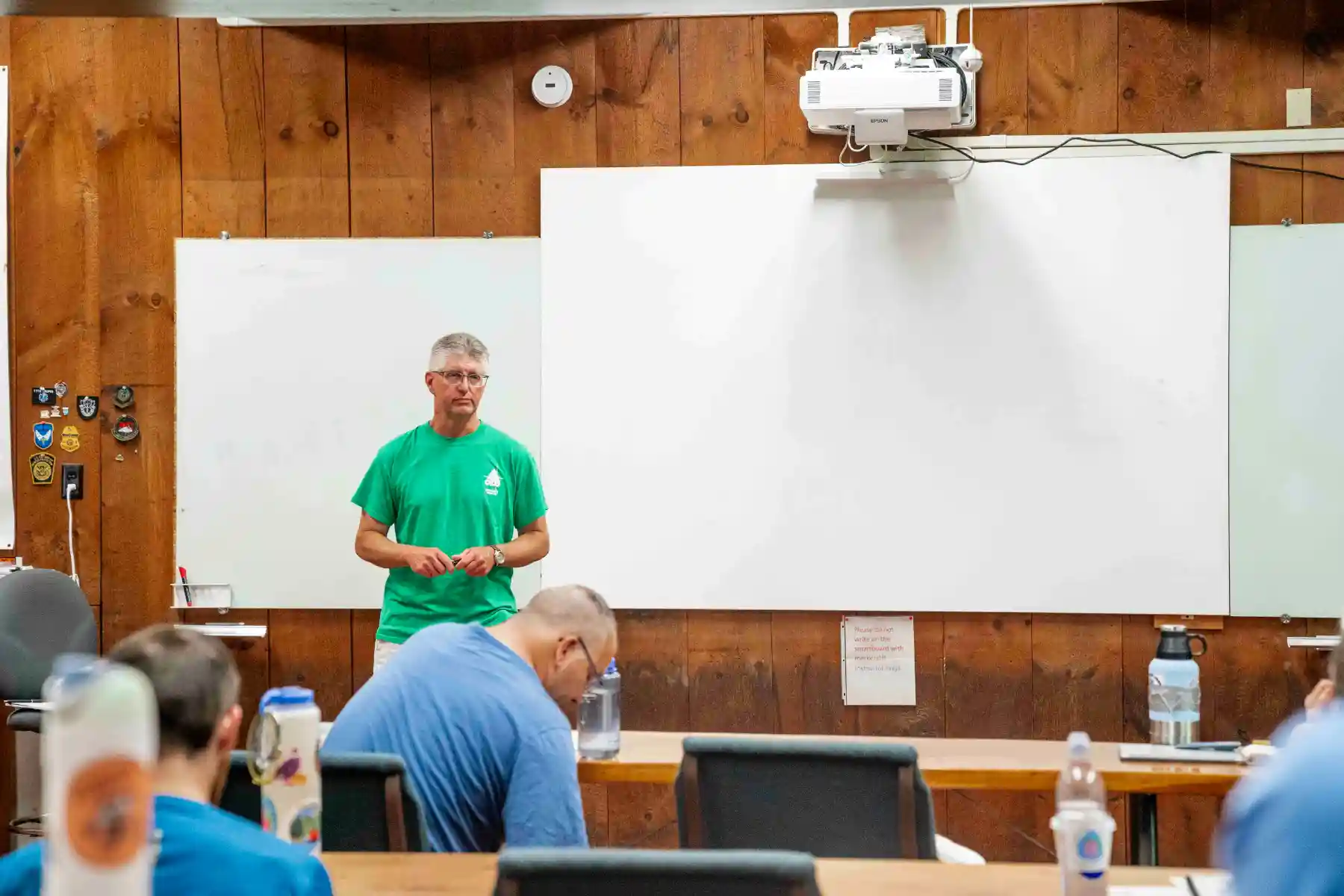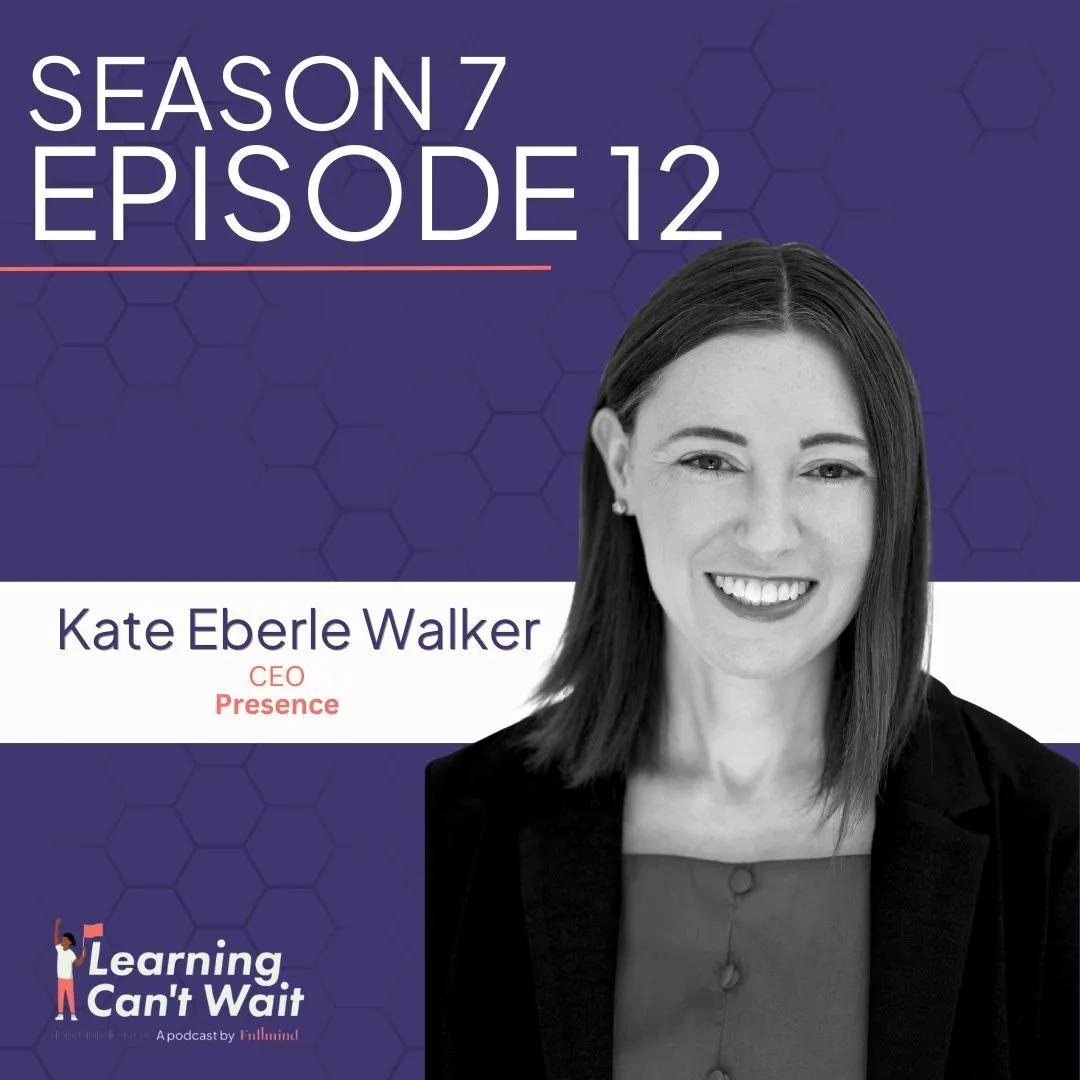For Education Leaders
Get proven strategies and expert analysis from the host of the Learning Can't Wait podcast, delivered straight to your inbox.
Virtual Staffing
Fill Teacher Vacancies in Days
- State-certified experts averaging 15+ years experience
- Fully aligned to your curriculum & standards
- Scalable, cost-effective hybrid solutions
School Staffing Agencies: The Ultimate Guide for Administrators

Teacher shortages have reached critical levels, specialized positions remain vacant for months, and finding qualified substitutes feels impossible. Recent events exacerbated existing problems, with educator burnout, early retirements, and shifting career priorities creating perfect-storm conditions in educational staffing.
This is where school staffing agencies come in. These organizations recruit, screen, and place temporary or permanent staff, including teachers, paraprofessionals, administrators, and specialists, in educational settings. They serve as partners to help schools navigate the complex landscape of talent acquisition and retention in education.
This guide will equip school leaders with everything needed to understand, evaluate, and partner with staffing agencies. We'll explore the benefits, types, selection criteria, collaboration processes, and common challenges, including how modern virtual teacher staffing solutions are transforming the field.
Why Partner with a School Staffing Agency? Core Benefits
School administrators report that staffing issues consume disproportionate amounts of their time and energy. Working with education staffing services offers strategic advantages beyond filling vacant positions:
- Agencies maintain networks that reach beyond local applicant pools, including passive candidates who aren't actively job-hunting but might be perfect for your school.
- Faster Hiring Process: When critical positions are vacant, student learning suffers. Recruitment agencies quickly connect schools with pre-screened candidates, reducing time-to-hire.
- Specialized Skill Access: Agencies' bread and butter is filling challenging positions like STEM teachers, world language instructors, and special education staffing. Their networks make finding these rare skillsets easier.
- Increased Flexibility & Scalability: Need to quickly adapt to enrollment fluctuations, cover maternity leaves, or launch a pilot program without long-term staffing commitments? Agencies provide the agility modern schools need.
- Reduced Administrative Burden: The hiring process consumes valuable time. Outsourcing time-intensive tasks like sourcing, screening, and initial credential verification frees up administrative resources for other priorities.
- Compliance & Vetting Expertise: Agencies specialize in background checks, reference verification, and certification validation, ensuring compliance standards are met consistently.
Some agencies let you evaluate a candidate's fit within your school culture before extending a permanent offer through a Try Before You Hire (Temp-to-Perm) program, reducing costly hiring mistakes.
By leveraging these advantages, schools can allocate resources more effectively while maintaining focus on their core mission: student success.
Understanding School Staffing Agencies & Services
Not all K-12 staffing agencies are equal. Understanding the different models will help you identify the right partner for your needs.
Placement Focus: Temporary, Permanent, and Temp-to-Perm
Temporary staffing agencies specialize in short-term placements, making them ideal for substitute teachers, leave coverage, or seasonal needs. Permanent placement agencies focus on filling long-term vacancies, often charging a one-time fee. Temp-to-perm agencies offer a hybrid approach, allowing schools to evaluate staff in temporary roles before converting them to permanent employees.
Specialization: General vs. Niche
General staffing agencies place candidates across multiple industries, including education. While they offer broad reach, they lack education-specific expertise. Education-specific agencies focus exclusively on school staffing, providing a deeper understanding of certification requirements, educational terminology, and school culture. Some specialize in special education staffing, administrative roles, or other niches.
Service Delivery: Traditional vs. Virtual Staffing Solutions
Traditional staffing agencies focus on placing physical personnel within school buildings, which is the conventional model most administrators know.
Virtual staffing agencies provide qualified certified virtual educators who deliver instruction or support services remotely. This model has gained traction, especially for:
- Expanding course offerings, especially AP and specialized electives
- Reaching homebound students
- Filling positions in subjects that are high-demand and low-supply
- Providing targeted interventions to specific student populations
- Supporting rural districts with limited local talent pools
The virtual teacher staffing model creates new possibilities for schools facing staffing challenges.
Common Roles
School staffing agencies typically place professionals in:
- Certified Teachers (all subjects)
- Substitute Teachers
- Paraprofessionals/Classroom Aides
- Special Education Professionals
- Speech, Occupational, and Physical Therapists
- School Nurses
- Admin Staff
- Virtual Instructors and Tutors
Choosing the Right Partner: Key Evaluation Criteria for Your School
Finding the right staffing agency requires careful consideration. The following criteria will help you evaluate potential partners:
Specialization and Experience in Education
The education sector has unique requirements, terminology, and culture. Ask potential agencies:
- How long have you specialized in educational staffing?
- What percentage of your business is K-12 placement?
- Do you understand state-specific certification requirements?
- Are you familiar with educational terminology (IEP, SWD, etc.)?
- Can you provide examples of successful placements in similar schools?
Rigorous Screening and Vetting Process
When hiring new staff for your school, quality control is crucial. Inquire about:
- Specific state and federal background check procedures
- Reference verification protocols
- Credential/license validation processes
- Interview and screening methods
- Subject-matter competency assessment
- Classroom management evaluation (for teaching positions)
Reputation and References
An agency's track record speaks volumes:
- References from similar schools or districts
- Data on placement success rates and retention
- Testimonials from other educational clients
- Information about professional affiliations or accreditations
Geographic Reach vs. Virtual Capabilities
Consider your staffing needs:
- Does the agency have a strong candidate pool in your area?
- If you need virtual teacher staffing, do they have robust technology platforms and experience delivering remote instruction effectively?
- Can they serve multiple locations if you're a larger district?
Communication and Relationship Management
Clear, consistent communication is essential for a successful partnership:
- Who will be your dedicated point of contact?
- What is their typical response time?
- How do they handle urgent staffing needs?
- What is their process for addressing concerns or performance issues?
- Will you have direct access to decision-makers when needed?
Cost Structure and Transparency
Thoroughly understand the financial aspects:
- What is their fee structure (percentage markup, flat fee, etc.)?
- Are there hidden costs or additional fees?
- Do they offer volume discounts for multiple placements?
- What are their payment terms and invoicing schedule?
- Are contract terms clearly defined and negotiable?
Compliance and Insurance
Confirming to protect your school:
- The agency follows all relevant labor laws.
- They carry liability insurance.
- Workers' compensation coverage is in place.
- Their compliance with educational regulations
Key Questions for Potential Agencies:
- "What makes your agency qualified to understand and meet K-12 staffing needs?"
- "Describe your process for verifying teacher certifications and conducting background checks specific to our state."
- "What is your average time-to-fill for similar positions in schools like ours?"
- *"How do you ensure candidates are qualified and align with school culture and values?"*
- "What happens if a placement doesn't work out? What are your replacement policies?"
- "How do you ensure educators engage students effectively remotely for virtual positions?"
- "What technological capabilities do you offer for virtual staffing solutions?"
Investing time in thorough upfront evaluation prevents headaches later and ensures you find an agency partner that understands your school's unique needs.
The Collaboration Process: What to Expect When Working with an Agency
Understanding the typical workflow helps set expectations for a productive partnership with school staffing agencies:
Step 1: Needs Assessment & Job Order
Start by defining your staffing requirements. Expect to discuss:
- Required qualifications and certifications
- Assignment duration (temporary, permanent, potential for conversion)
- Timing and urgency
- School culture and environment
- Preferred special skills or experience
- Budget considerations
Providing comprehensive information now improves match quality.
Step 2: Contract & Agreement
Before proceeding, you'll review and sign a service agreement outlining:
- Terms of service
- Fee structure
- Roles and responsibilities
- Confidentiality provisions
- Performance guarantees
- Termination conditions
Have your legal team review this document before signing.
Step 3: Candidate Sourcing & Presentation
The agency activates recruitment channels to find qualified candidates. They'll:
- Screen resumes and applications
- Conduct initial interviews
- Verify credentials and references
- Complete background checks
- Present a shortlist of candidates with detailed profiles.
Quality agencies provide thorough documentation and thoughtful matching instead of forwarding numerous resumes.
Step 4: School Interview & Selection
Your team often interviews final candidates with agency coordination. The agency can:
- Schedule interviews
- Provide interview space if needed
- Offer templates
- Facilitate follow-up questions
- Assist with final selection
You maintain decision-making authority while benefiting from the agency's streamlined process.
Step 5: Onboarding & Integration
Once you select a candidate, clear onboarding ensures success:
- Clarify who handles paperwork (school or agency)
- Provide orientation specific to the school
- Establish systems access and resources
- Assign a mentor or buddy
- Set clear expectations and a reporting structure.
Step 6: Performance Management & Feedback
Ongoing communication is crucial:
- Establish regular check-ins
- Provide performance feedback to the agency.
- Address concerns promptly
- Recognize and reinforce successful placements
Step 7: Invoicing & Payment
Understand the financial process:
- Review invoices for accuracy
- Process payments per terms
- Track expenditures against budget
- Document placement outcomes for future reference.
A transparent, collaborative approach at each stage builds a stronger partnership and improves outcomes for both schools and staff.
Navigating Challenges & Ensuring Success
Even the best agency partnerships can encounter obstacles. Awareness of common challenges helps you address potential issues proactively:
Challenge: Cost
Agency fees raise concerns about staffing budgets and resource allocation.
Mitigation: Calculate the complete ROI beyond the visible fee. Consider costs saved on recruitment time, advertising, screening, and the impact of filled versus unfilled positions. Negotiate volume discounts for multiple placements and ensure pricing transparency from the outset.
Challenge: Quality Control
Ensuring agency candidates meet your school's standards can be a concern.
Mitigation: Be involved in defining requirements, including technical qualifications, teaching philosophy, and cultural fit. Choose agencies with education-specific expertise and rigorous vetting processes. Provide detailed feedback on each placement to help the agency refine their understanding.
Challenge: Integration & School Culture
Agency staff sometimes feel like "outsiders," which can affect cohesion and collaboration.
Mitigation: Implement a comprehensive onboarding process that includes school culture orientation. Assign a school mentor or buddy to each staff member. Include agency personnel in communications, professional development, and staff events. Foster a welcoming environment that recognizes the contribution of all team members regardless of employment status.
Challenge: Communication Gaps
Misunderstandings between school administration, the agency, and staff can undermine success.
Mitigation: Establish clear points of contact and communication channels. Schedule regular check-ins with the agency representative and placed staff. Define protocols for addressing concerns or changes in requirements. Document key conversations and decisions to maintain continuity.
Addressing these challenges creates a foundation for successful collaboration that serves students, schools, and educators effectively.
The Rise of Virtual Staffing & Specialized Solutions
Successful virtual staffing relies on quality instruction. The best solutions feature live, certified teachers instead of asynchronous or non-certified options. This ensures genuine teacher-student relationships, real-time feedback, and engaging instructional strategies. The technology platform must integrate with school systems and be intuitive for educators and students.
Schools seeking expertise should find a partner dedicated to providing live, certified virtual educators. Organizations like Fullmind specialize in connecting schools with live, certified teachers across all subjects and learner needs (including SWD services and IEP fulfillment), offering customized virtual staffing and learning solutions tailored to school and district requirements.
This model offers staffing flexibility while ensuring students receive high-quality instruction from properly credentialed educators, regardless of local market limitations or geographic constraints.
Legal & Compliance Considerations
When working with school staffing agencies, several legal and compliance areas require attention. Agencies handle much of the compliance work, and schools must verify these processes meet educational standards.
Key considerations include ensuring the agency conducts thorough background checks according to state and federal requirements for school employees. Certification and licensure verification processes should be rigorous and state-specific. Agencies should demonstrate adherence to Equal Employment Opportunity (EEO) laws in their recruitment and placement practices.
Schools should understand co-employment the shared legal responsibility between the agency and the school for placed personnel. Clarity about which entity handles specific employer responsibilities (discipline, evaluation, benefits) prevents confusion and liability issues.
School districts should consult their legal counsel to review agency agreements and clarify compliance and co-employment responsibilities. This proactive approach protects the school and students while building a legally sound staffing partnership.
Conclusion: Leveraging Staffing Agencies for School Success
Carefully chosen and strategically managed school staffing agencies are valuable partners in addressing K-12 talent acquisition challenges. These partnerships transform staffing from a challenge to a strategic advantage by providing access to wider candidate pools, accelerating hiring processes, offering specialized expertise, and creating flexibility.
Schools can build comprehensive talent strategies that meet current and future needs by conducting thorough due diligence in selecting agency partners and considering traditional and virtual staffing solutions. This proactive approach to staffing enables administrators to focus on their primary mission: providing excellent educational experiences that prepare all students for success.
For Education Leaders
Get proven strategies and expert analysis from the host of the Learning Can't Wait podcast, delivered straight to your inbox.
Let’s Work Together
We’ll review your application and get in touch!

.webp)



.webp)
.webp)


.webp)
.webp)
.webp)










































.webp)



%20.webp)

























.webp)

.webp)


.webp)


.webp)




